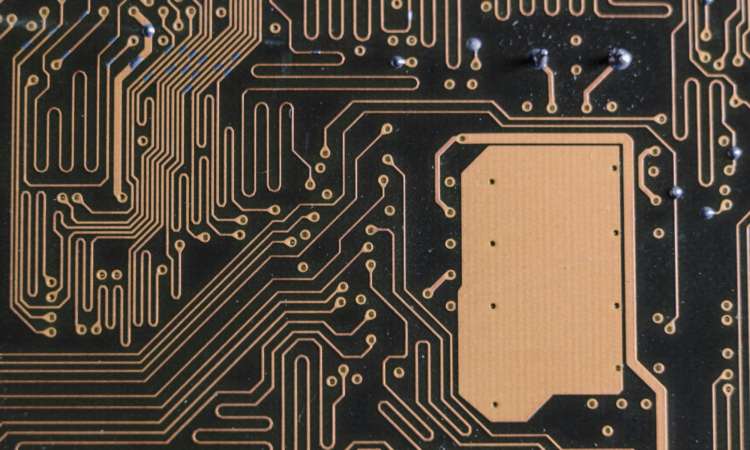From Scarcity to Strategy: Alon Rajic on Why Physical Metals Could Be the Next Big Alternative Investment

You’re reading Entrepreneur Middle East, an international franchise of Entrepreneur Media.
With the global demand for critical minerals soaring amid the energy transition and rising geopolitical tension, Alon Rajic founded Earth Rarest to give investors direct access to the world’s rarest industrial metals. From gallium to dysprosium, his company aims to connect strategic resources and private investment.
Rajic says he believes physical ownership of rare metals is increasingly being viewed as a potential complement to traditional portfolio hedges like gold.
The Idea That Sparked Earth Rarest
The concept behind Earth Rarest began with a simple observation: every major technology, from semiconductors and smartphones to solar panels, relies on a small group of elements that most people have never heard of. When Rajic tried to invest in these materials himself, he discovered how limited the options were.
“There was no secure, transparent, and accessible way for private investors to obtain direct exposure to these metals,” he explains. “No futures contracts, no ETFs, and the stocks that deal with rare metals rarely correlate with the underlying materials.”
Determined to close that gap, Rajic drew from his own investment experience to design a model that could connect individuals to tangible, industrially relevant assets. “Most portfolios remain heavily tied to equities, with perhaps a small allocation to gold,” he says. “But diversification can also include exposure to assets connected to real-world production.”
By focusing on verified sourcing and secure, insured storage, Earth Rarest aims to make what was once an institutional market more accessible for individuals—without compromising transparency or integrity.
Why Rare Metals Are Becoming Strategically Important
Much of the value behind rare and strategic metals lies in their foundational role in modern manufacturing. These are the elements that make possible the electric vehicle revolution, renewable energy systems, and advanced optics. “When governments and manufacturers are competing for supply,” Rajic notes, “that reflects a long-term structural pattern rather than a short-term fluctuation.”
He also emphasizes the geopolitical factor. More than 80% of global refining capacity is concentrated in a single market, which raises concerns about supply-chain concentration and political risk. “That concentration risk means any disruption, whether political or logistical, can move markets quickly,” he explains.
For many investors, that makes rare metals both a potential opportunity and a tool for balancing exposure to technology-driven industries. As clean energy and high-tech production become increasingly intertwined, the demand for these critical resources continues to expand.
Building Trust Through Transparency
At the heart of Earth Rarest’s mission is transparency. “The goal isn’t just to sell metals; it’s to make the entire process clear and verifiable,” Rajic says. Every investor can request documentation, serial numbers, and independent verification at any time, a level of accountability rarely seen in commodity investment.
Education plays a central role, too. While metals like lithium and cobalt are now household names, others, such as germanium and praseodymium, are less known despite their crucial roles in microchips and electric motors. “When clients understand the strategic importance of each metal, their investment becomes more meaningful,” Rajic adds.
Overcoming Early Misconceptions
Launching Earth Rarest wasn’t without challenges. “The main obstacle was awareness,” Rajic recalls. “Once investors understood the concept, they were intrigued, but the learning curve was steep.”
To build trust in a traditionally opaque industry, the company partnered with established suppliers and storage providers, including a Frankfurt-based industrial metals supplier. It also worked to combat misconceptions. “Some people compared rare metals to speculative crypto assets or short-term commodities,” he says. “But this isn’t about chasing volatility; it’s about preservation and industrial relevance.”
Through patient education and consistent communication, Earth Rarest helped investors see the long-term value in physical ownership.
A Different Kind of Investment Model
Earth Rarest’s key distinction lies in combining financial insight with industrial expertise. Many firms focus on either metal trading or investment marketing, but Earth Rarest integrates both perspectives. Each investor receives proof of origin, secure storage certification, and documentation confirming physical ownership.
The company works exclusively with recognized European refiners whose materials already serve leading manufacturers. It also provides research updates on shifting supply-demand fundamentals and policy developments such as the EU’s Critical Raw Materials Act and the U.S. Defense Production initiatives, both of which could influence pricing dynamics over time.
“In short,” Rajic says, “we treat strategic metals as an informed investment class, not just a product.”
The Future of Strategic Metals
Looking ahead, Rajic believes the next five years will reshape how rare and strategic metals are perceived. “What was once a niche industrial topic is now part of mainstream policy,” he says. As the EU, UK, and U.S. push for greater critical-mineral independence, new frameworks around traceability, recycling, and domestic production are emerging.
He expects that increased awareness could gradually affect how markets value these materials. “Governments are even setting floor prices for certain metals to encourage local production,” he notes.
Digital innovation will also play a growing role. Blockchain-based certification, for instance, can enhance transparency around ownership, provenance, and ESG compliance. Rajic envisions a future where investors can verify every aspect of their holdings in real time, turning strategic metals into a recognized, regulated asset class.
Advice for a New Generation of Investors
Rajic’s advice to those exploring this space is straightforward: learn before you invest. “Understand which metals underpin the technologies you believe in,” he says. “Don’t follow hype cycles; focus on scarcity and real-world use cases.”
He stresses the importance of choosing partners who can provide full transparency over storage, sourcing, and verification. “That becomes crucial when it’s time to liquidate your position,” he explains. “You want to hold industry-grade metals that can be resold into the supply chain.”
True diversification, he adds, isn’t just about owning more assets; it’s about balancing different forms of risk. Because rare metals don’t move with stock markets or currencies in the same way traditional commodities do, they may serve as a stabilizing component within diversified portfolios, especially during periods of monetary fluctuation.
Redefining Success Through Tangible Value
For Rajic, success is about reconnecting investors with the value of physical ownership. “If Earth Rarest helps people move beyond the idea of wealth as just a number on a screen and reconnect with the value of something that is genuinely of value, physical and enduring, then we’ve achieved our mission,” he says.
That mission also extends to improving global resource security. Privately owned metals often re-enter industrial supply chains, supporting liquidity and production. “In that sense,” Rajic adds, “we’re not just preserving value; we’re contributing to the technologies of tomorrow.”



